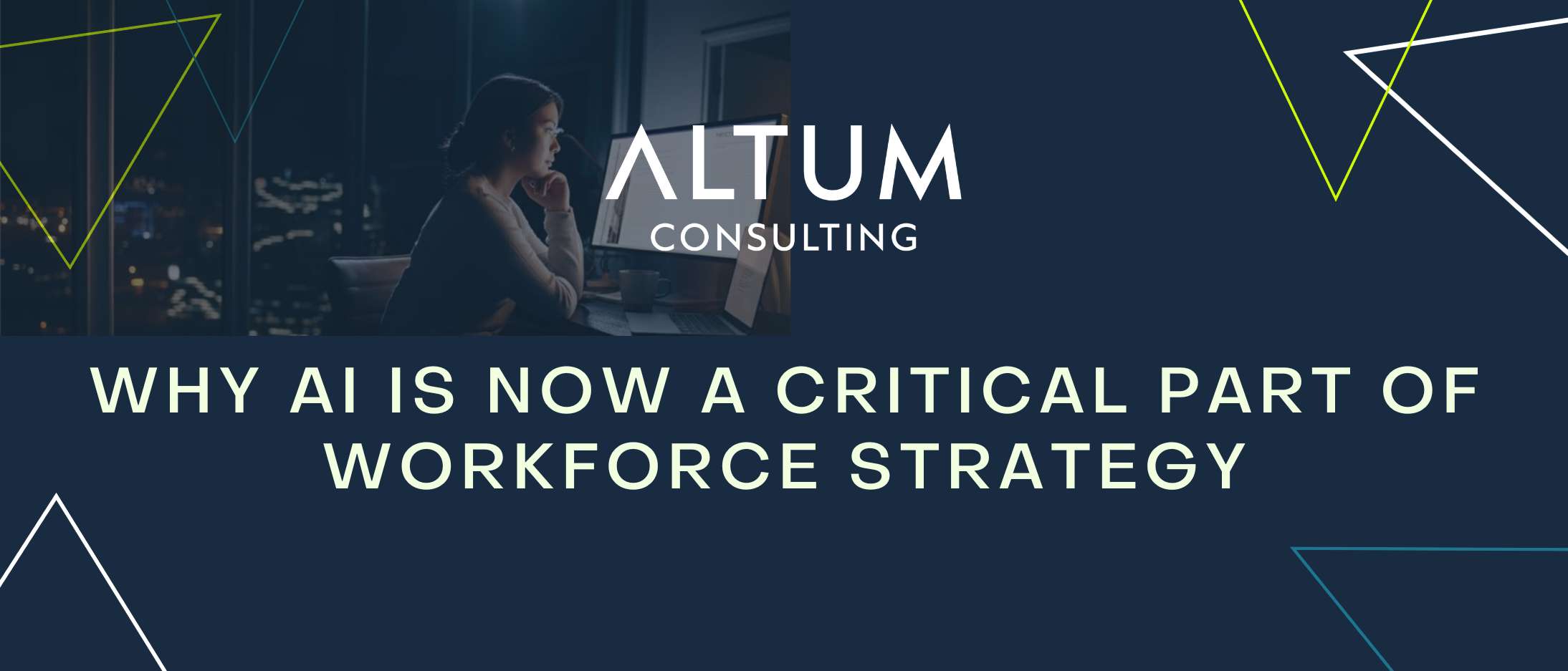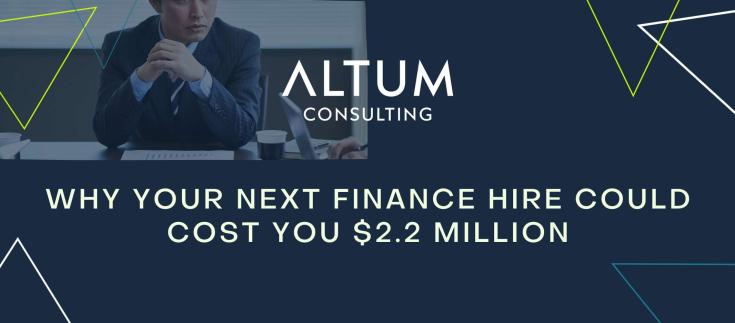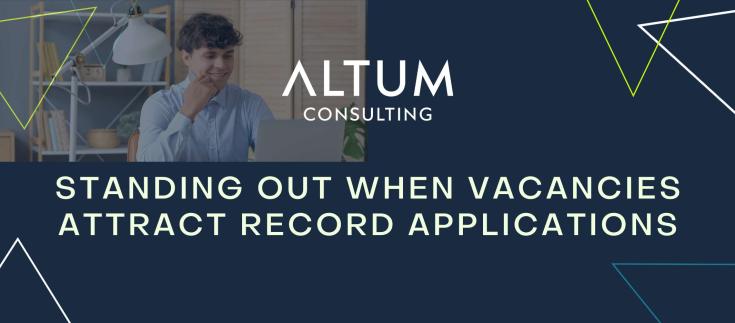Written by George Ofori & Josh Carter-White | Altum Consulting
The conversation about artificial intelligence has shifted from speculation to implementation. Across boardrooms business leaders are grappling with a reality that arrived faster than most anticipated. AI has become a workforce problem that demands strategic attention from the very top of organisations, requiring far more than technical solutions from IT departments.
The UK government's 2024 AI Sector Study reveals the scale of change underway. AI employment in the UK increased by 33% in a single year, reaching 86,139 full-time positions. Revenue from AI-related activities jumped 68% to £23.9 billion, whilst the sector's contribution to gross value added more than doubled to £11.8 billion. These figures represent something fundamental: AI has moved from experimental technology to economic engine, and the workforce implications are profound.
Strategy Determines Success
More than three-quarters of organisations now use AI in at least one business function, up from 55% just one year earlier. But adoption alone doesn't guarantee results. McKinsey's latest global survey identified that organisations with CEOs directly overseeing AI governance see significantly higher bottom-line impact from their investments. This correlation points to an uncomfortable truth: most companies treat AI as a technology deployment when organisational transformation is what actually delivers results.
Only 21% of organisations have fundamentally redesigned workflows to accommodate generative AI. That number explains why over 80% of respondents report seeing no tangible impact on enterprise-wide earnings from their AI use. The technology works. Companies are bolting AI onto existing processes rather than rethinking how work should be done when intelligent systems become available.
At Altum, this pattern appears repeatedly in our client conversations. Organisations hire data scientists, license software platforms, and launch pilot projects. Then they discover their people lack the literacy to use these tools effectively. Middle managers resist changes that feel imposed rather than co-created. Legacy systems create integration nightmares that balloon budgets and timelines. The technical implementation succeeds, but the business transformation fails.
The Talent Challenge
The UK government documented a 58% increase in AI companies compared to the previous year, with 5,862 firms now operating in the sector. Most of this growth came from small and medium enterprises, suggesting widespread recognition of commercial opportunity. But recognising opportunity and executing on it are different problems, and the constraint is talent.
Whilst organisations continue hiring for AI roles, the difficulty of filling these positions has remained persistently high. Data scientists, machine learning engineers, and data engineers remain in particularly short supply. More tellingly, new roles have emerged that barely existed two years ago. Thirteen percent of surveyed organisations now employ AI compliance specialists, and 6% have hired AI ethics specialists. These positions reflect the maturing regulatory environment and the growing awareness that AI deployment carries risks that require dedicated oversight.
The shortage extends beyond purely technical skills. 71% of AI companies expect increased need for skilled workers over the coming year, with the same proportion reporting growing requirements for software and development tools. Computing power needs are rising for 66% of firms. Building entirely new capabilities across organisations has become essential, from procurement teams that understand computational infrastructure to legal departments equipped to handle algorithmic accountability.
What Roles Require Now
AI fluency is becoming a baseline expectation rather than a specialist credential. The business functions deploying AI most extensively are marketing and sales, IT, and service operations. In technology companies, software engineering teams use it heavily. In professional services firms, knowledge management functions have become early adopters. This dispersed deployment pattern means that AI literacy can no longer be concentrated in technical departments.
Organisations are responding by reskilling portions of their workforce. Many companies have already retrained employees as part of AI deployment, with expectations for more extensive reskilling in the years ahead. The most common approach when AI saves time is redirecting employees to entirely new activities rather than reducing headcount. However, larger organisations are more likely than smaller ones to have cut positions as a result of automation, suggesting that workforce impacts vary significantly based on scale and sector.
Expectations about AI's effect on workforce size differ sharply by function. Respondents anticipate headcount reductions in service operations and supply chain management, whilst IT and product development are expected to see increases. This split reflects AI's dual nature: it automates some work whilst creating demand for new capabilities in other areas.
Implementation Realities
Access to investment emerged as a significant challenge in the UK government's research. Fifty-three percent of surveyed AI businesses reported that access to equity investment had affected their ability to meet goals over the previous year. When asked about factors expected to impact future activity, 58% cited availability of growth funding.
Cost concerns reflect genuine uncertainty about return on investment. Whilst larger shares of organisations now report cost reductions within business units compared to early 2024, these gains have not yet translated to material enterprise-wide impact. Revenue increases are similarly concentrated at the business unit level rather than appearing in consolidated results.
Technical integration remains difficult. Some businesses, particularly those working on advanced applications, raised concerns about dependence on foreign technology and infrastructure. Cloud infrastructure and large language models, which form the backbone of many AI applications, are largely controlled by a small number of international providers. This creates both commercial and strategic vulnerabilities that organisations are only beginning to address.
What We See Working
The organisations making genuine progress share certain characteristics. They track well-defined key performance indicators for their AI solutions, which research identified as having the most impact on bottom-line results. Larger companies in particular establish clearly defined roadmaps to drive adoption through phased rollouts across teams and business units. This disciplined approach contrasts sharply with companies that launch multiple disconnected pilots without clear paths to scale.
Successful organisations also centralise certain elements whilst distributing others. Risk and compliance functions, along with data governance, are often handled through centralised centres of excellence. Technical talent and adoption of AI solutions, by contrast, typically use hybrid models with some resources centralised and others distributed across functions. This selective centralisation allows organisations to maintain standards and share expertise whilst retaining the flexibility needed for function-specific applications.
Employee oversight of AI outputs varies widely but appears critical. Twenty-seven percent of organisations have employees review all content created by AI before it reaches customers or gets used in business processes. Another similar proportion reviews 20% or less of AI-generated content before use. The right level of oversight likely depends on risk tolerance and use case, but having no systematic review process is increasingly recognised as irresponsible.
Looking Ahead
The UK government projects a surge, with almost 90% of AI businesses expecting revenue increases over the next year and 58% anticipating growth of 50% or more. These expectations reflect both the technology's genuine potential and the current market enthusiasm. Whether organisations realise this potential depends on their ability to manage the workforce transformation it requires.
At Altum, we work with clients who need more than engineers. They need project managers who understand AI programme delivery. They need change specialists who can drive adoption across resistant middle management. They need transformation leads who can redesign workflows rather than simply automating existing ones. They need compliance experts who grasp the regulatory implications of algorithmic decision-making.
Companies that treat AI implementation as a people challenge alongside a technical one will see returns. Those that approach it purely as a software implementation will join the majority still seeing no enterprise-wide impact from their investments.
Altum Consulting is a specialist search and interim management firm, focused on Accountancy & Finance, Change & Transformation, Human Resources and Audit, Risk & Compliance.
Sources referenced:
McKinsey: https://www.mckinsey.com/capabilities/quantumblack/our-insights/the-state-of-ai
Want to know more?











